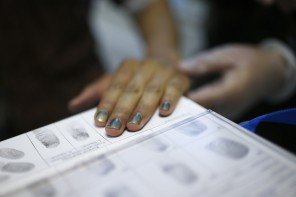Update: For more on this issue, see the following posts. For a broader look at constructing a relationship between readers and writers when covering rape and trauma, see my January/February 2011 article in the Columbia Journalism Review (PDF here with permission).
Stop. Right now, just stop. Call Mac and tell her to put down her smartphone.
You don’t need the “live” part of live-tweeting. You can get all the power of Twitter as a medium even if you wait to use it. Let Mac report the story, write all the details in her notebook, do all her interviews, get all the journalistic work done — and then think like a journalist about how to use Twitter to tell the story.
You can let a serial micro-narrative unfold this way, with more writer (and editor!) control, and in a way that allows Mac and MoJo to take the time needed to follow good professional practice on trauma journalism during the interview. That lets her give her full attention to the subject, to address one of many concerns raised to me (@itsjina) from my own post on this topic.
I still wouldn’t do it — my personal opinion is that the Twitter medium is too ephemeral a medium for so serious a topic, and that serializing a rape story on Twitter is a cute gimmick, but that the topic demands a lot more than that. And I know you’ll give it more than that in your pages.
But if you really want to see what Twitter can offer you as a tool for putting out story of violence against women in Haiti, use Twitter’s most magical weapon of all: digital illusion. If Mac tweets the story out over an hour in three days, we won’t care that she wasn’t tweeting as she saw it unfold. It will still unfold for us, the reader.



Good ideas! I certainly hope Mother Jones will be in conversation with your posts that are relevant to this interview blunder that has happened!